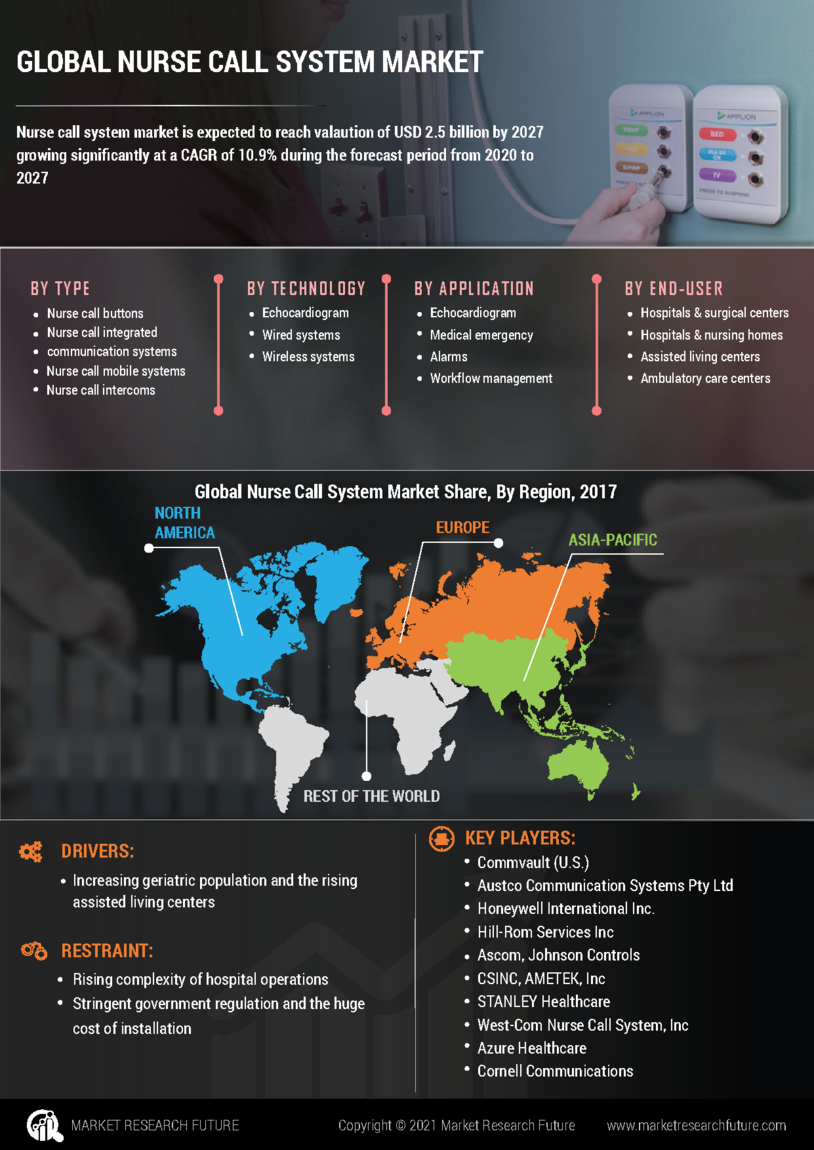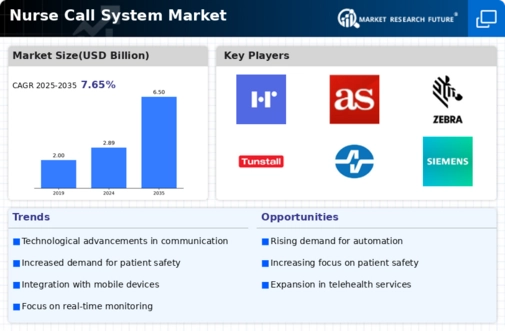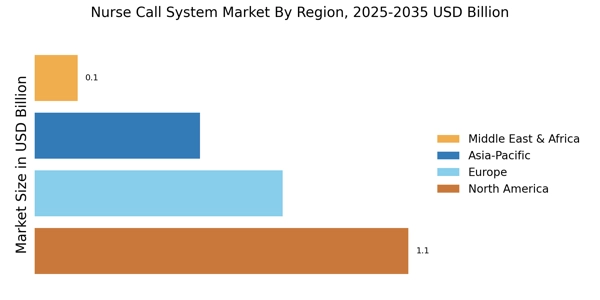Integration of IoT and Smart Technologies
The Nurse Call System Market is significantly influenced by the integration of Internet of Things (IoT) and smart technologies. These advancements enable seamless communication and data exchange between devices, enhancing the overall efficiency of healthcare operations. The incorporation of IoT in nurse call systems allows for real-time monitoring of patient conditions, which can lead to quicker response times and improved patient care. Furthermore, the market data indicates that the adoption of smart technologies is expected to increase by over 15% in the coming years, as healthcare facilities seek to leverage these innovations for better operational efficiency. This trend not only enhances the functionality of nurse call systems but also aligns with the broader movement towards digital transformation in healthcare.
Rising Demand for Enhanced Patient Safety
The Nurse Call System Market experiences a notable increase in demand for enhanced patient safety measures. Healthcare facilities are increasingly prioritizing the implementation of advanced nurse call systems to ensure timely communication between patients and healthcare providers. This trend is driven by the growing awareness of patient safety protocols and the need to minimize response times in critical situations. According to recent data, the nurse call system market is projected to grow at a compound annual growth rate of approximately 10% over the next few years. This growth reflects the industry's commitment to improving patient outcomes and satisfaction, as well as the integration of innovative technologies that facilitate real-time communication. As healthcare providers strive to create safer environments, the demand for sophisticated nurse call systems is likely to continue its upward trajectory.
Regulatory Compliance and Quality Standards
The Nurse Call System Market is increasingly shaped by regulatory compliance and the need to meet quality standards in healthcare. Governments and regulatory bodies are establishing stringent guidelines to ensure that healthcare facilities provide safe and effective patient care. Compliance with these regulations often necessitates the adoption of advanced nurse call systems that can facilitate accurate communication and documentation. As healthcare providers strive to meet these standards, the market for nurse call systems is likely to expand. Recent data indicates that facilities investing in compliant nurse call systems may experience a reduction in liability risks and improved patient satisfaction scores. This regulatory landscape thus serves as a significant driver for the nurse call system market, compelling healthcare organizations to prioritize the implementation of compliant technologies.
Shift Towards Telehealth and Remote Monitoring
The Nurse Call System Market is witnessing a shift towards telehealth and remote monitoring solutions, which are becoming increasingly vital in modern healthcare. The rise of telehealth services has prompted healthcare facilities to integrate nurse call systems that support remote communication between patients and providers. This trend is particularly relevant in the context of chronic disease management, where timely interventions are crucial. Market data suggests that the telehealth segment is expected to grow by approximately 20% in the next few years, indicating a strong demand for nurse call systems that can facilitate remote patient monitoring. As healthcare providers adapt to this evolving landscape, the integration of nurse call systems with telehealth platforms is likely to enhance patient engagement and improve overall care delivery.
Aging Population and Increased Healthcare Needs
The Nurse Call System Market is experiencing growth driven by the aging population and the corresponding increase in healthcare needs. As the global demographic shifts towards an older population, there is a heightened demand for healthcare services, particularly in long-term care facilities and hospitals. This demographic trend necessitates the implementation of efficient nurse call systems to ensure that healthcare providers can respond promptly to the needs of elderly patients. Market data suggests that the demand for nurse call systems in senior living facilities is expected to rise significantly, with projections indicating a growth rate of around 12% in this segment. Consequently, the aging population is a critical driver for the nurse call system market, as it compels healthcare providers to adopt solutions that enhance patient care and operational efficiency.


















Leave a Comment